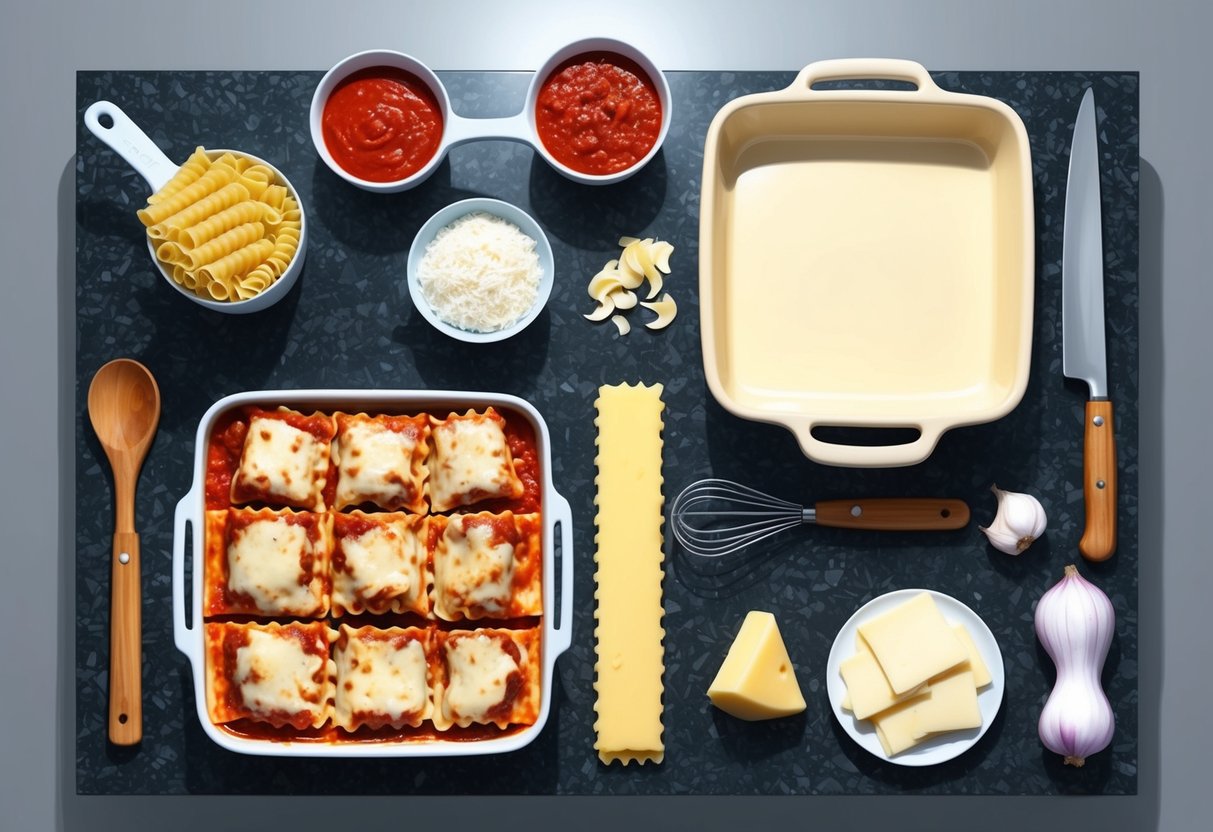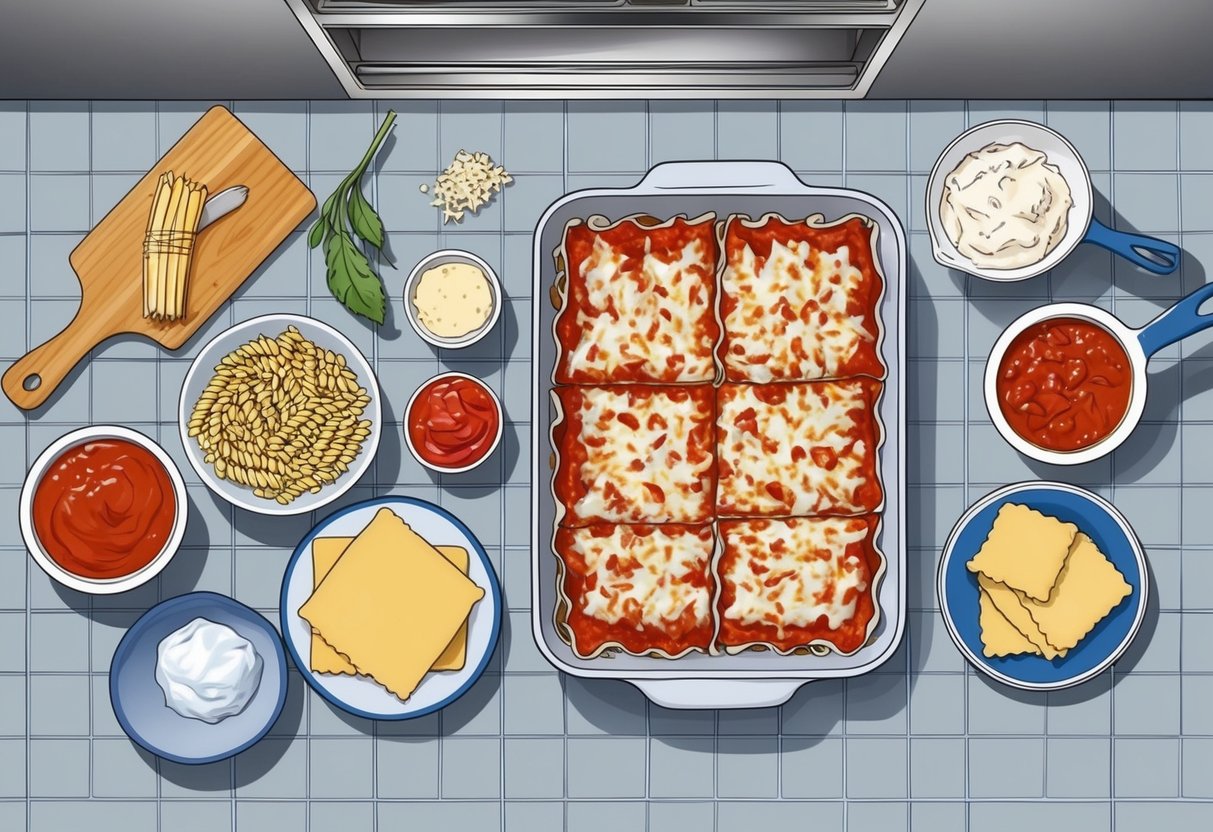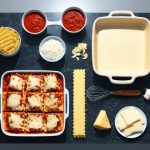
Common Mistakes to Avoid When Making Lasagna

Mastering restaurant quality lasagna at home means paying close attention to technique and avoiding frequent errors that can compromise taste and texture.
Small missteps like incorrect layer assembly or unbalanced seasoning may lead to disappointing results.
Preventing Watery or Dry Layers
Watery or dry layers are a frequent hurdle for home cooks.
Using uncooked or incorrectly prepped noodles often leads to excess moisture accumulation or undercooked pasta.
Oven-ready noodles need extra sauce, while traditional noodles should be boiled just until al dente to avoid sogginess or dryness after baking.
Too much liquid in sauces or ricotta cheese causes the final dish to seep water.
Draining ricotta, allowing sauces to thicken, and not overloading with watery vegetables are essential steps.
Covering the lasagna tightly during baking then uncovering at the end balances moisture and prevents a burnt, dry top.
Proper order and spacing of layers matters.
Each noodle sheet should be fully covered with sauce and filling to keep layers moist without making them soggy.
Even restaurant chefs use this approach for consistent, satisfying lasagna texture.
Maintaining Flavor Balance
Building layers with restaurant quality flavor means moderation and careful ingredient choice. Using too much cheese, meat, or sauce can overpower milder ingredients and lead to greasy, heavy bites.
Each component—sauce, noodles, cheese, and fillings—should contribute without dominating the dish. Seasoning each element separately prevents bland layers and ensures taste consistency throughout.
Herbs like basil and oregano, a well-cooked ragù, and quality Parmesan all make a difference. Avoid using only one type of cheese.
Assembling with equal parts of noodles, sauce, and other fillings helps maintain balance and avoid crumbly, overstuffed layers. This keeps the lasagna cohesive and flavorful in every bite.
Frequently Asked Questions

Making lasagna with authentic flavor and professional results requires attention to ingredients, technique, and timing. Small adjustments, such as cheese selection and noodle preparation, also contribute to the overall quality and texture of the dish.
What are the essential ingredients for a traditional Italian lasagna?
A classic Italian lasagna relies on a few key ingredients: wide pasta sheets, a rich meat-based ragù or sauce, creamy béchamel, grated Parmigiano-Reggiano cheese, onions, garlic, and fresh herbs like basil and parsley. Some versions use ricotta or mozzarella, but Parmigiano-Reggiano gives the most authentic flavor.
High-quality olive oil, tomato paste, and ground beef or pork are standard base components.
Can you outline the steps to layering lasagna like a professional chef?
Begin with a thin layer of sauce at the bottom of the pan to prevent sticking. Add a layer of cooked noodles, then carefully spread a portion of the cheese mixture and sauce across the noodles.
For each layer, alternate noodles, meat sauce, and cheese, being consistent with thickness to maintain even cooking. Finish with a layer of sauce and a generous top layer of cheese for a golden crust, as demonstrated by restaurant chefs in video guides.
What tips can enhance the flavor profile of homemade lasagna?
Use slow-cooked meat sauce for depth and develop flavor with aromatics such as garlic, carrots, and onions. Fresh herbs improve aroma and complexity, while a mixture of cheeses can boost richness.
Let the lasagna rest 15-20 minutes before cutting, which helps the flavors settle and the layers to firm up.
How can you achieve the perfect texture for lasagna noodles?
Cook noodles until just al dente; overcooked noodles become mushy during baking. If using no-boil noodles, ensure there is sufficient sauce to soften the sheets as they bake.
A light toss in olive oil after boiling can help prevent sticking and tear-free layering, as detailed in easy lasagna recipes.
What are some common mistakes to avoid when making lasagna at home?
Avoid using too much sauce or cheese between layers, as this can cause sogginess and mess when serving. Don’t overboil the noodles or skip resting the dish before cutting.
Neglecting to properly season the sauce or using low-quality ingredients can also lead to bland results, as noted in many home cook discussions.
Could you provide guidance on how to select quality cheeses for a rich lasagna?
Choose cheese with strong melting qualities, such as whole milk mozzarella, for stretch and creaminess.
Opt for authentic Parmigiano-Reggiano or Pecorino Romano for a sharp flavor.
If using ricotta, pick whole milk varieties with minimal additives for better texture and taste.



